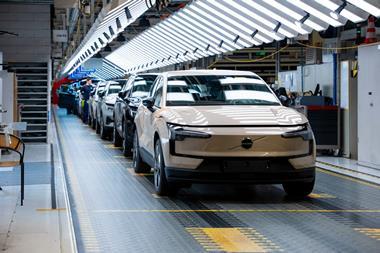Global trade disputes could dim electric vehicle production potential in key markets
By Daniel Harrison and Christopher Ludwig2019-10-28T19:11:00
Trade uncertainties such as those between the US and China, or the UK and the EU, could put the brakes on growth in the electric vehicle and battery supply chain for some OEMs and countries, despite bullish forecasts for alternative powertrains
The automotive industry is highly exposed to trade disputes, tariffs and the ongoing ideological and economic battle between protectionism and free trade, and any significant disruption to these movements, be it higher tariffs, lengthy border checks or regulatory compliance issues, can put assembly lines at risk. The costs would also likely erase the relatively low operating profits typical across OEMs and tier suppliers.
What’s more, the extra costs and red tape in global trade complicate OEM and tier supplier investments and plans for significantly greener, more efficient technology. For example, automotive companies are spending billions of dollars to transition to electrified powertrains, in part to meet tightening emissions regulations in major markets like the EU, China and Japan. Over the next decade, Automotive from Ultima Media forecasts that the combined market share of hybrid, electric and hydrogen powertrains among new vehicle sales will increase from around 8% today, to 55% by 2030.
For analysis of how trade disputes will impact electric vehicle markets, and to download our full report and global forecast for automotive powertrains up to 2030, login or register.





































